The complete history of Blizzard games on PC
We look back at the impact of every Blizzard game and share inside stories from veteran developers.
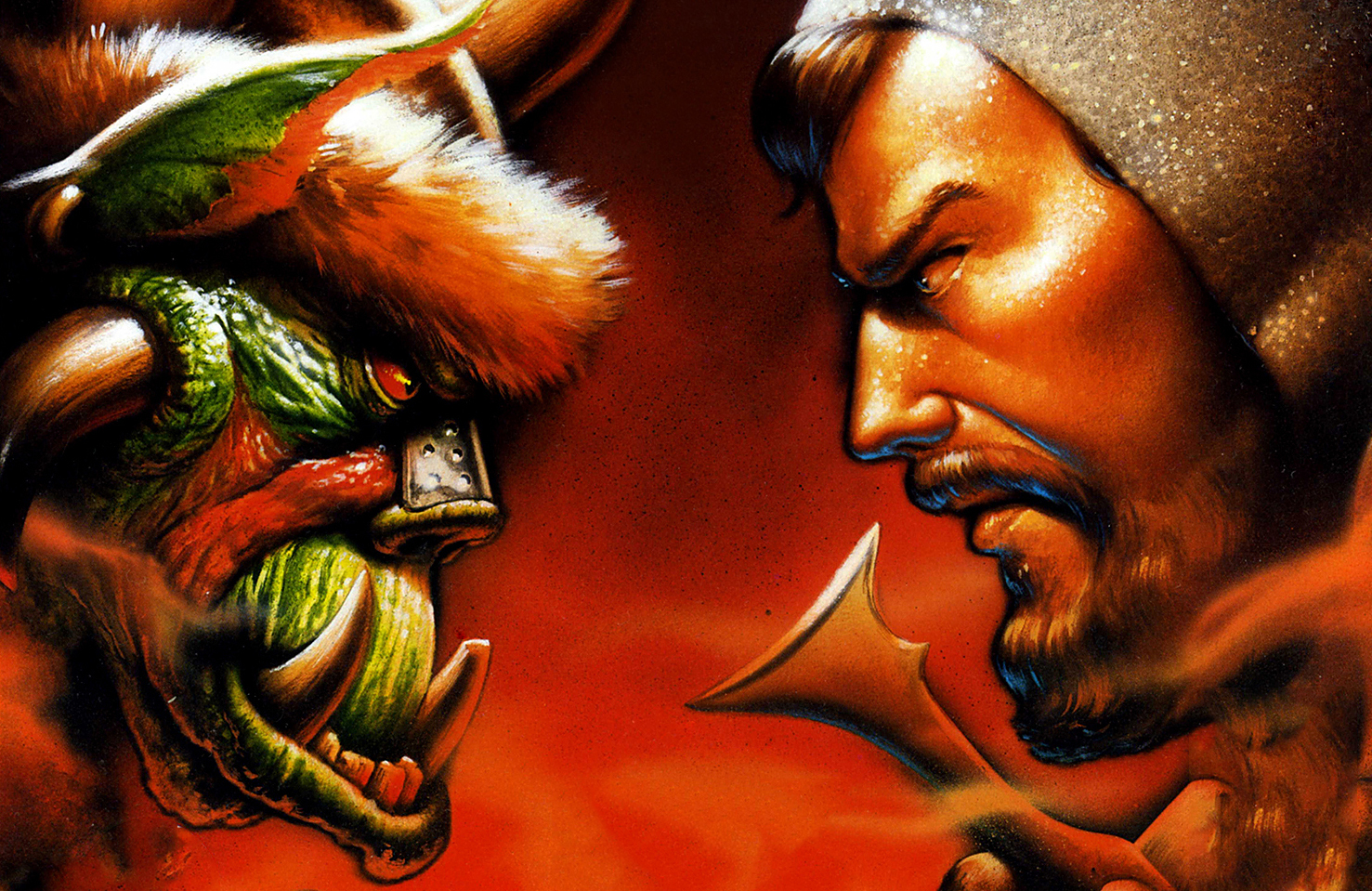
What was the moment Blizzard became the the most beloved developer in PC gaming? Was it with the release of Diablo 2 in 2000, an action-RPG that personified addiction and kept players talking about their ladder ranking for years? Was it with World of Warcraft, which once had more than 12 million people paying for it every single month? Or was it even earlier, with StarCraft or its multiplayer-perfecting expansion Brood War in 1998?
Someone, somewhere will probably say that Blizzard has been their favorite since 1992, when the studio (then less than a dozen twenty-somethings) made a little game called The Lost Vikings. Twenty five years: that's how long Blizzard's been in the business, and throughout that time it's evolved from a tiny company porting games to the Super Nintendo into a studio of hundreds, known for polishing each and every game to a shine, no matter how long it takes.
But you probably knew that already. What you might not know is that former Blizzard producer Bill Roper performed every single voice in Warcraft: Orcs & Humans, or that there are invisible weapon racks in Diablo that players have likely never found. You might not know that co-founder Frank Pearce served as the rotoscoped model for Blackthorne. Hell, you might've never even heard of Blackthorne.
To celebrate Blizzard's 25th anniversary, we've taken a look back at every single Blizzard PC game (sorry, Rock n' Roll Racing fans!) and considered its place in the Blizzard pantheon—what it meant for the company and how it affected PC gaming at the time. We've also interviewed more than a dozen Blizzard veterans, many of whom have been with the company for more than 20 years. We've also pulled in quotes and insights about the game from old interviews and anniversary videos.
There's a lot of trivia in these pages—and at least one surprise Lemmings reference. Here's the history of Blizzard's 25 years on the PC, game-by-game.
Page 1: The Lost Vikings - Warcraft 2 (1992 - 1995)
Page 2: Diablo - Warcraft 3 (1996 - 2002)
Page 3: World of Warcraft - Overwatch (2004 - 2016)
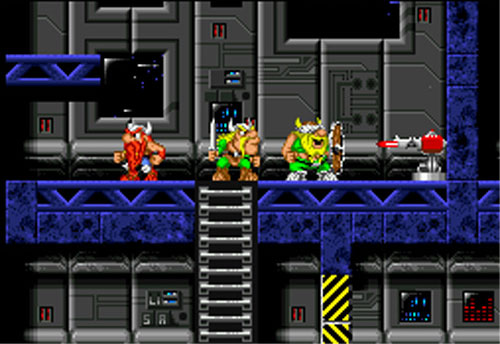
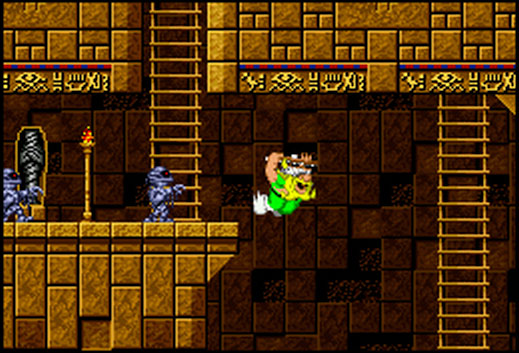
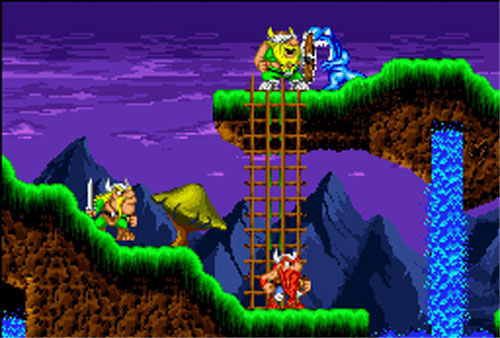
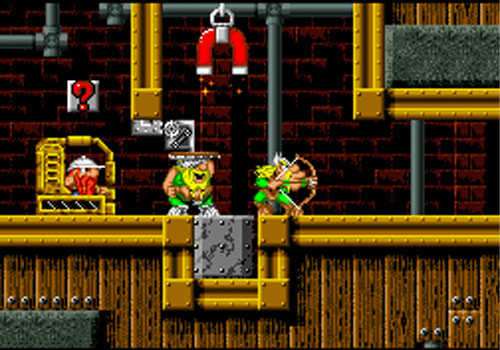
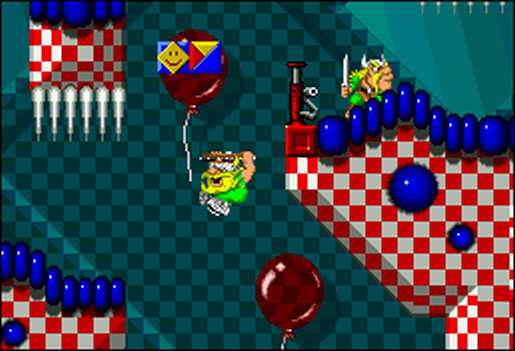
The Lost Vikings (1992)
Three’s company
System requirements: DOS 3.1, Intel 80386SX CPU, 640KB RAM
The biggest gaming news, reviews and hardware deals
Keep up to date with the most important stories and the best deals, as picked by the PC Gamer team.
The Lost Vikings wasn’t the start of Blizzard as a company, but it was the first game Blizzard released on PC. Blizzard was still called Silicon & Synapse for its first three games, and it wasn’t until Warcraft: Orcs & Humans that the company really went all-in on developing for the PC, though Lost vikings helped lay the groundwork for that. The game’s levels were created using a program called CED, a cell editor made by CEO Mike Morhaime that Blizzard used to lay out levels, which later went on to be the basis of the Warcraft and StarCraft map editor.
Blizzard was also hired by Interplay Productions to create a scripting engine for developing platformers, which it then used for nearly all of its SNES games. But Morhaime recalled to us that Blizzard got much more use out of it than Interplay. “I think in the amount of time we did all those games, maybe they did one or two,” Morhaime said. “We were a lot faster with it.” But having a larger company help fund their engine development boosted the still relatively small team, at that point only a dozen or so people total.
Even if the studio wasn’t under a different name at the time, it would be easy to forget that Blizzard made The Lost Vikings. Its sequel in 1997 was the last platformer the studio ever made, and I only realized the connection when the game’s bumblingly heroic trio was resurrected for Heroes of the Storm. But even this early on, you can see traces of that distinct Blizzard style peek through. The bright colors and exaggerated proportions would let its characters fit right in with the Warcraft series, and the contrast of ye olden swords and shields with a sci-fi setting is oddly prophetic of Blizzard’s future ventures.
Samwise Didier, art director of Blizzard, in Blizzard 20th anniversary video
“When I started on Lost Vikings, there were about 100 vikings you could control. Some that would raise up ladders, some that would throw torches, all that sort of thing. It was very PC game oriented. … We decided to make it a little more friendly for the Super Nintendo, so we dropped it down to five characters, then to four, then to three.”
Michael Morhaime, in a Blizzard Insider interview:
"I think we learned some important design lessons that have become sort of part of the Blizzard culture now. Everyone at the company played The Lost Vikings over and over to help test and polish it. We saw what a huge impact that such attention to detail had on the game. We also learned that the people who program and design a game aren't the best judges of how difficult it is to play; they know the game too well. We had to constantly bring new people in and watch them play, especially with the early levels, to make sure they weren't too hard. Working on Vikings helped us remember the big picture: that a game, first and foremost, should be fun to play…that it should feel good and look good. The Lost Vikings was also our first attempt at adding a bit of humor to a game. We wanted each Viking to have some charm, so we came up with funny animations and interesting dialogue to give each character his own unique personality. By the time Warcraft II came along, we had refined the concept a little more, but Blizzard's first attempts at humor began with The Lost Vikings."
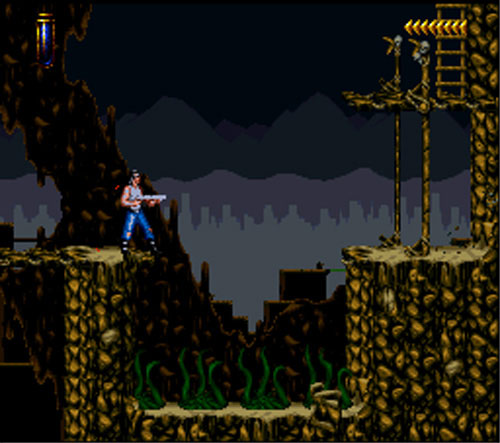
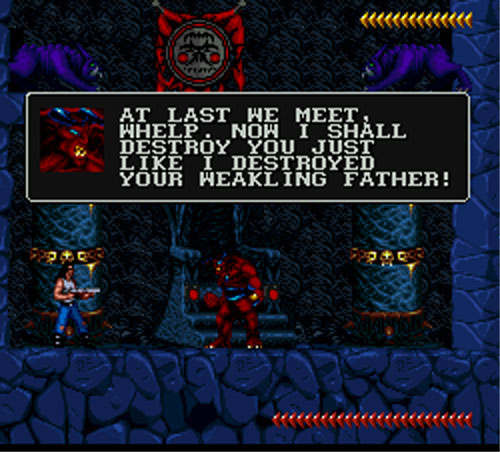
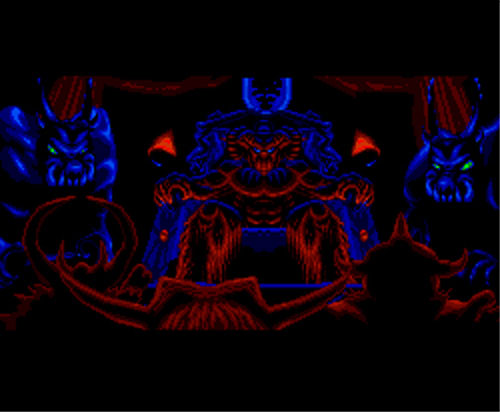
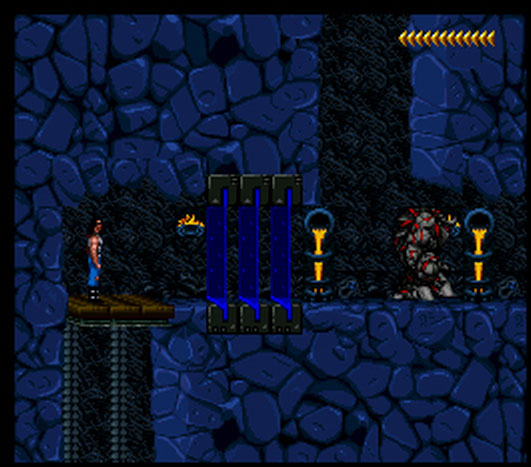
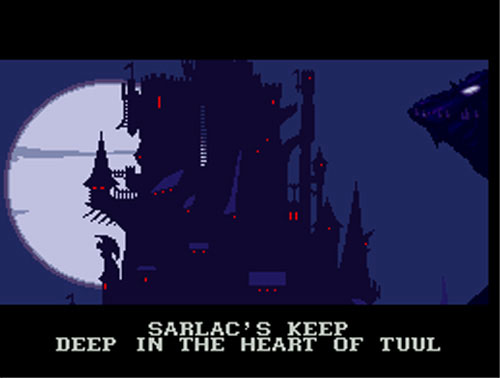
Blackthorne (1994)
4.7 percent alcohol by volume
System requirements: DOS 3.1, Intel 80386SX CPU, 2MB RAM
"Imagine Prince of Persia with a shotgun and a bad attitude, and you've got a good idea what Blackthorne is all about. - PC Gamer" reads the quote on the back of Blackthorne's box. Perhaps the most forgotten of Blizzard's original games, Blackthorne was built in the platformer engine Blizzard designed to port Interplay's games to the Super Nintendo. Side-scrolling platformers and shooters were far more common on consoles than on PC, but Blackthorne was up against the likes of Duke Nukem II and Alien Carnage in 1994.
Perhaps most noteworthy, Blackthorne was the first game to bear the newly chosen name Blizzard Entertainment, after a brief stint as Chaos Studios.
Michael Morhaime (CEO) and Frank Pearce (CDO), Blizzard co-founders
MM: "Blackthorne was Frank's game."
FP: "I didn't design it, I just programmed it!"
MM: "Interplay actually hired us to create a scripting system for the Super Nintendo. Part of our deal was we got license to use the engine however we wanted. We used it for that."
FP: "I was in the office next to Allen [Adham], he wrote the damn thing, and I still couldn't figure out how to use it half the time."
Joeyray Hall, artist and video producer at Blizzard from 1991 - 2014, in Blizzard 20th anniversary video
"Blackthorne was actually our first rotoscoped game. We took Frank Pearce out in the back alley and got him to jump over a bunch of wood and run and climb ladders and we'd videotape him, then draw over him for the character."
Frank Pearce, in Blizzard 20th anniversary video
"When I think back on Blackthorne, the funny thing i think about is that the two artists that were primarily responsible for creating the character art both had long, stringy hair. And if you look at all the character art in Blackthorne, including the main character, they have this long, stringy hair. It's like, wow, these artists basically created this character art in their own image. And so I think we need more diversity among our artists so we get that diversity in our character art."
Allen Adham, Blizzard co-founder, in Blizzard 20th anniversary video
"We had to change the name in Europe from Blackthorne to Blackhawk. Blackthorne turns out to be a really popular brand of beer in Europe. It would be like, I guess, if we had named our product Budweiser."
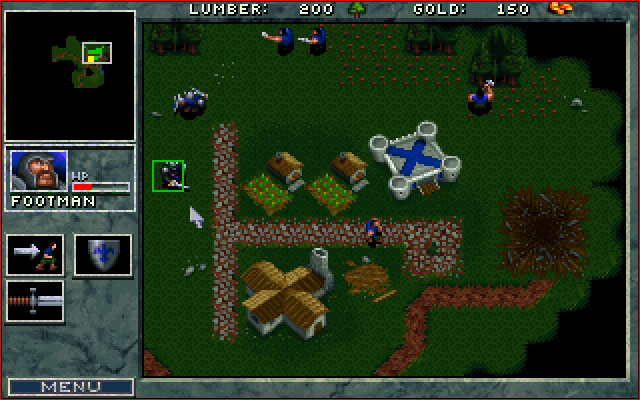
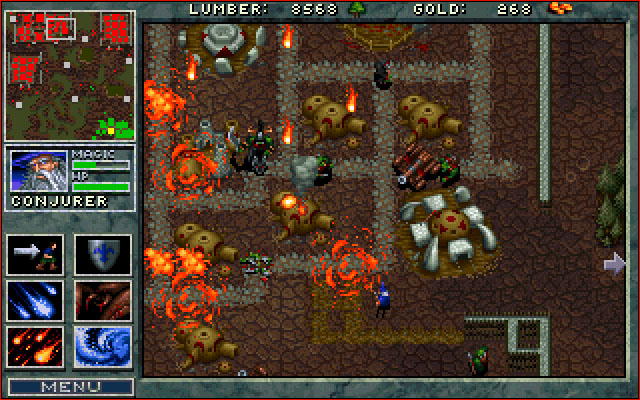
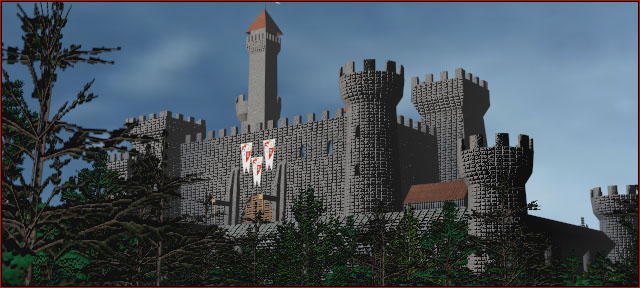
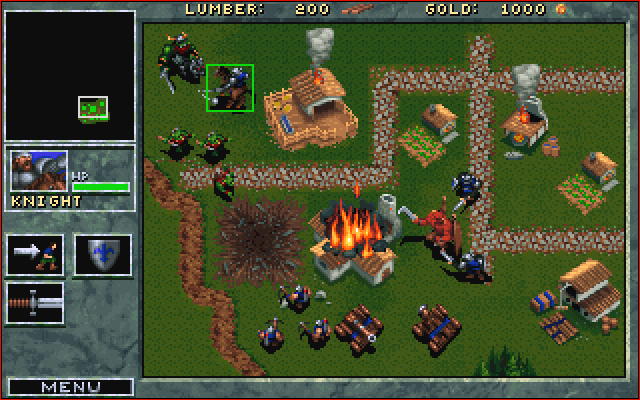
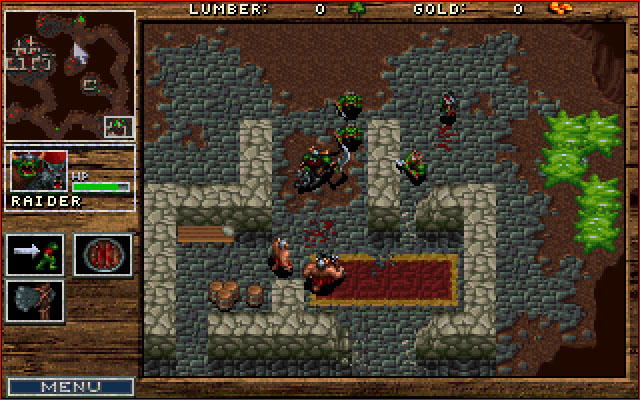
Warcraft: Orcs and Humans (1994)
Based on the hit 2016 motion picture "Warcraft"
System requirements: DOS 3.2, 20MHz Intel 80386 CPU, 4MB RAM
Until 1994, Blizzard was scraping by as a console developer, first porting games to the Super Nintendo for Interplay before making their own, like The Lost Vikings and Rock n' Roll Racing. Studio founders Allen Adham and Mike Morhaime were just scraping by, often taking out cash advances on their credit cards to make payroll. Warcraft was the game that altered their path, setting them on course to be the Blizzard we know today. Along with Westwood's Dune 2, released in 1992, Warcraft helped codify the basics of the RTS genre: building bases, sending units to gather resources, and using those resources and units to produce units to gather together into armies.
Compared to Blizzard's later games—even Warcraft 2, which came out a mere year later—Orcs & Humans feels simplistic in design and scope, with little of Blizzard's trademark lore to speak of. Multitasking is a chore. Buildings can only be constructed touching a constricting cobblestone road. But at the time, a game with as much character as Warcraft (and, crucially, LAN multiplayer) in the brand new RTS genre was enough to make a big splash in the PC gaming scene. It was by far Blizzard's biggest hit at the time, selling more than 100,000 copies in a year. And simple as it might feel now, some key Blizzard magic was already in place—producer Bill Roper's voice acting for every human and orc character will forever be part of Warcraft's DNA.
Bob Fitch, 22 year Blizzard veteran, most recently technical director for Hearthstone:
"If we hadn't made Lost Vikings, not only did it pay the bills, but it also gave us the experience we needed and ideas that we needed to make Warcraft: Orcs and Humans. I don't know if you know, but there's a certain relationship between those two games. We were actually thinking about doing little vikings, not orcs and humans, but little vikings as the RTS element in it. It was later that we came up with the idea of doing orcs and humans in it.
"I think that the two biggest games that we were playing at the time, and surely inspired us to some degree, were Dune 2 and Lemmings, if you can believe that. Lemmings. I think Warcraft originally started out as an idea that was somewhat like both of those, where we were going to have little vikings, but there were going to be a lot of them, and that's where the Lemmings part comes in. All the little vikings were going to be going off and doing their own things, and we knew from Dune 2 that we liked combat mechanics, and we were going to incorporate some combat in there as well. And just over time it morphed itself, like all of our games tend to, until it had turned into Warcraft: Orcs and Humans… all the little grunts going back and forth to the goldmines, that's something that came out of that idea, of having lots of little guys on the screen, all going around doing their own thing."
Michael Morhaime (CEO) and Frank Pearce (CDO), Blizzard co-founders
MM: “As a small developer going in and creating something new, console's way more expensive and more risky. Just think about the inventory risk that you have to take to go and publish a console game, even now.”
FP: “There's still a ton of risk because you have to decide how many units you're going to manufacture with the first parties, and you definitely want to sell through all of them. And if the community doesn't like your game you have a warehouse full of carts of discs that no one wants.”
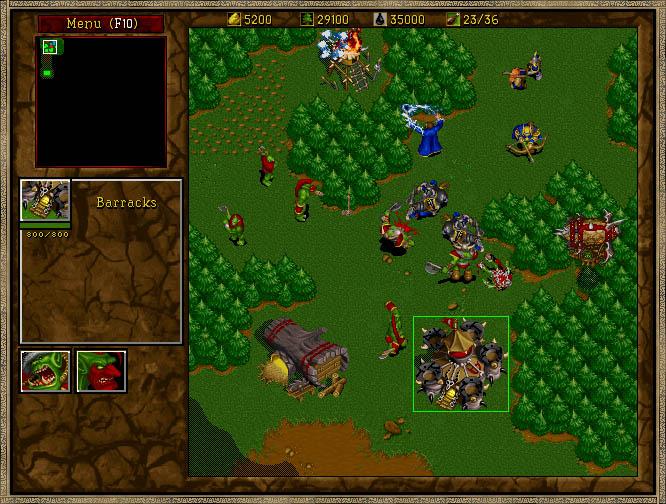
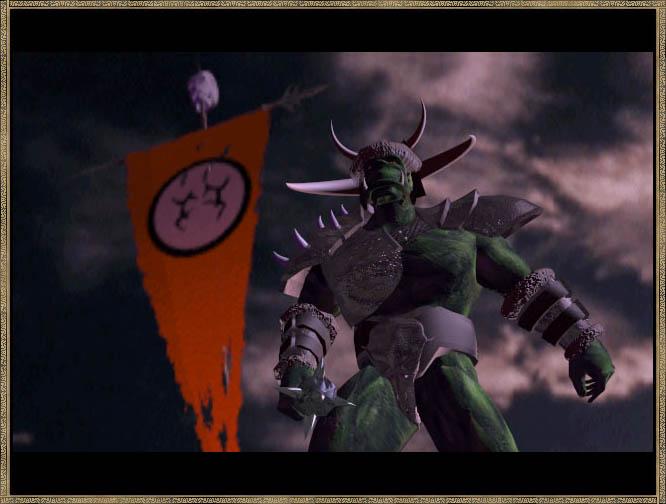
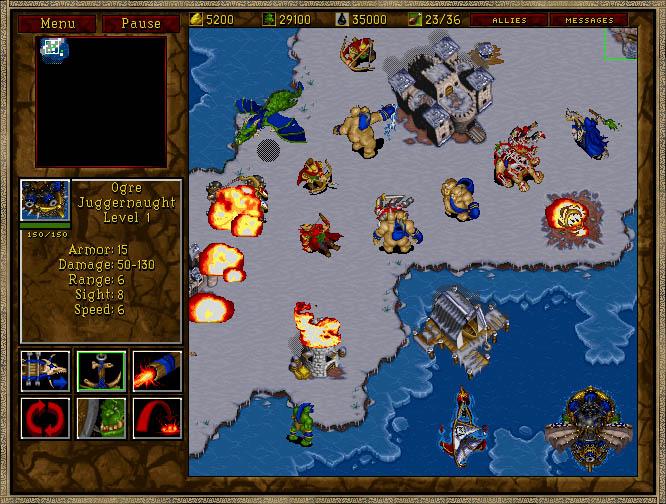
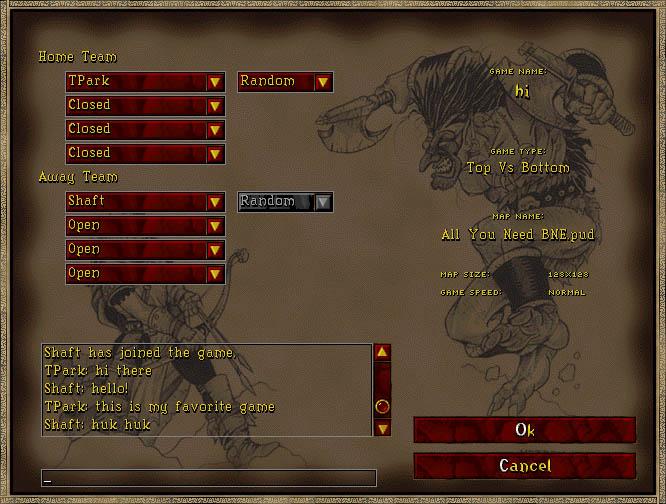
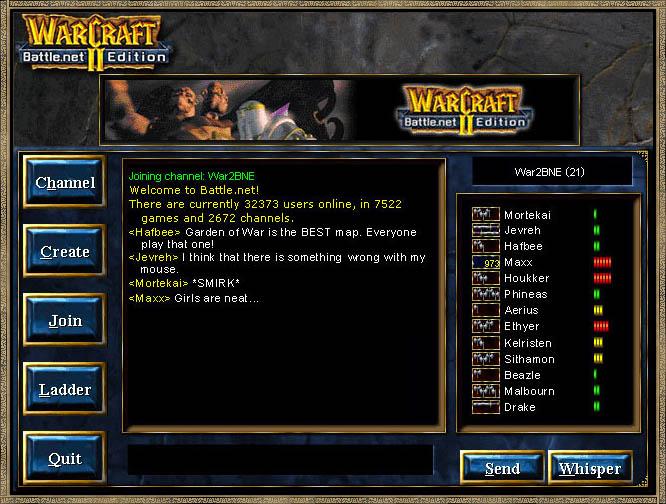
Warcraft 2: Tides of Darkness (1995)
Your sound card works perfectly!
System requirements: DOS 5.0, 33 MHz Intel 80486 CPU, 8MB RAM
Warcraft was Blizzard's first big hit, but Warcraft 2 feels like the game that cemented the studio as a premiere name in PC gaming. It hadn't hit superstar status just yet, but you can see the beginnings of what would make Starcraft such a phenomenon a few years later. Warcraft 2 dramatically expanded on the original in story and strategy and especially art. It's obviously a more competent game, filled out with more units (land, sea, and air!) and early stabs at narrative CG cinematics. Blizzard newbie Chris Metzen's influence stands out in the enriched lore and evocative B&W artwork in the manual.
And Warcraft 2 was fun. It was half cartoony art and voicework, half bloody fantasy, the perfect mix for every 13-year-old with a PC. Controlling units and multitasking were improved enough to make for one of the best multiplayer games of its time, less sprawling and chaotic but more refined than Westwood's Command & Conquer. Mapmaking tools and LAN multiplayer helped make Warcraft 2 a go-to online game in the early days of the network tunneling service Kali. You can trace the success of Starcaft's multiplayer and the existence of Dota straight back to Blizzard's early work on the Warcraft 2 scenario editor. It sold a million copies in its first year, and eventually two million more.
Bob Fitch, 22 year Blizzard veteran, most recently technical director for Hearthstone:
"In Warcraft 1 we had talked about having navies, and Sam Didier was very disappointed that we never got navies into Warcraft 1. He really, really wanted them in 2. One of the biggest changes was we wanted to add all the things we wished we had in the first one, and finally get them in, as if this is what we really wanted to make, but you have to draw the line somewhere. So we got navies, and just have more units, more variety. It was just little features we wished we had, user interface changes. Navies is the thing."
Rob Bridenbecker, Vice President of Technology Strategy and Planning:
"We obviously had support for LAN plan, direct link modems and what have you, but there was this really cool service called Kali where people would participate online against one another. But War 2 didn't really play very nicely with it, largely because it's a synchronous game. It was never really engineered to be set up so that it would wait the necessary time for every one of the players to receive everybody else's player data simultaneously. We did a little bit of work to make War 2 function better with Kali. I think that's an important one [in the history of Battle.net], because at that time we said 'Gosh, it really should be easier. From a player perspective it should be easier for me to jump into a match and play against one another… We [later] ported Warcraft 2 and made a Battle.net edition."
Michael Morhaime, Blizzard co-founder and CEO:
"When we were doing Warcraft, definitely when we put in the Blizzard spell, we were totally thinking of referencing our name."

Wes has been covering games and hardware for more than 10 years, first at tech sites like The Wirecutter and Tested before joining the PC Gamer team in 2014. Wes plays a little bit of everything, but he'll always jump at the chance to cover emulation and Japanese games.
When he's not obsessively optimizing and re-optimizing a tangle of conveyor belts in Satisfactory (it's really becoming a problem), he's probably playing a 20-year-old Final Fantasy or some opaque ASCII roguelike. With a focus on writing and editing features, he seeks out personal stories and in-depth histories from the corners of PC gaming and its niche communities. 50% pizza by volume (deep dish, to be specific).

